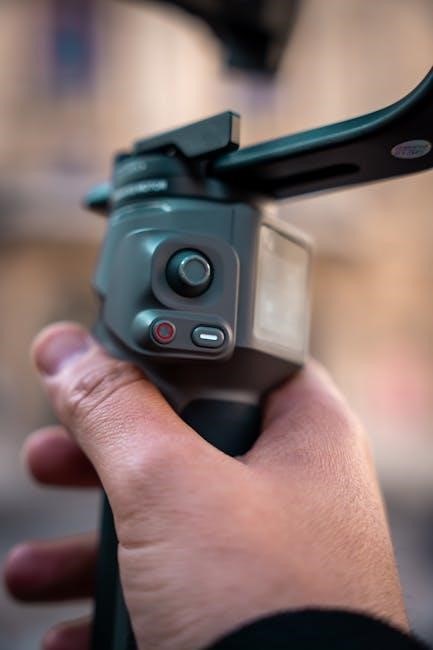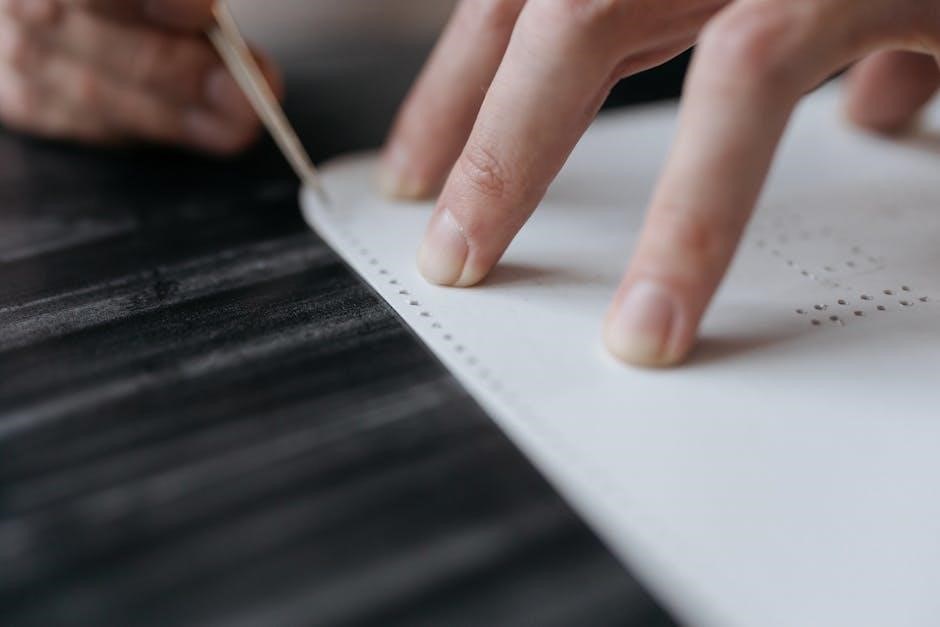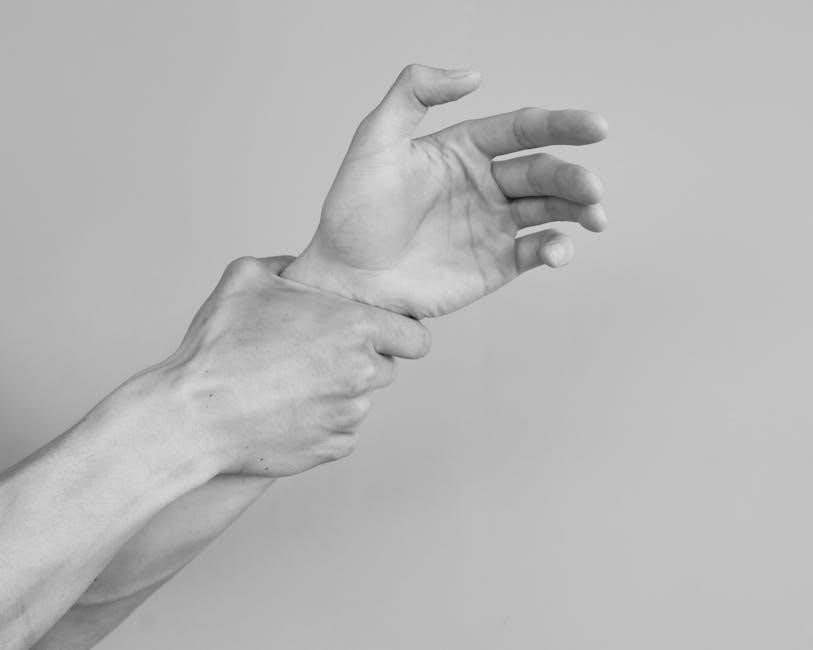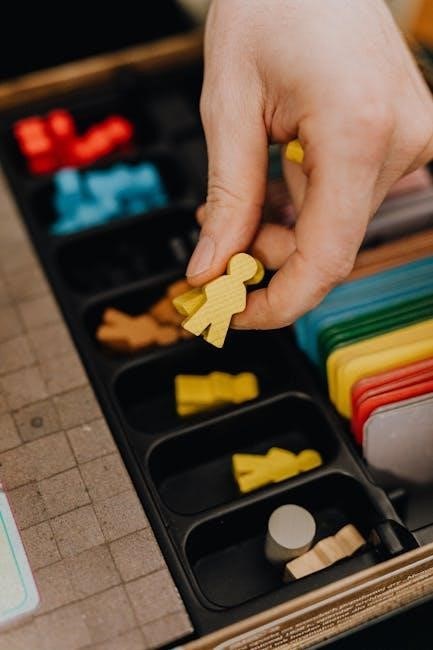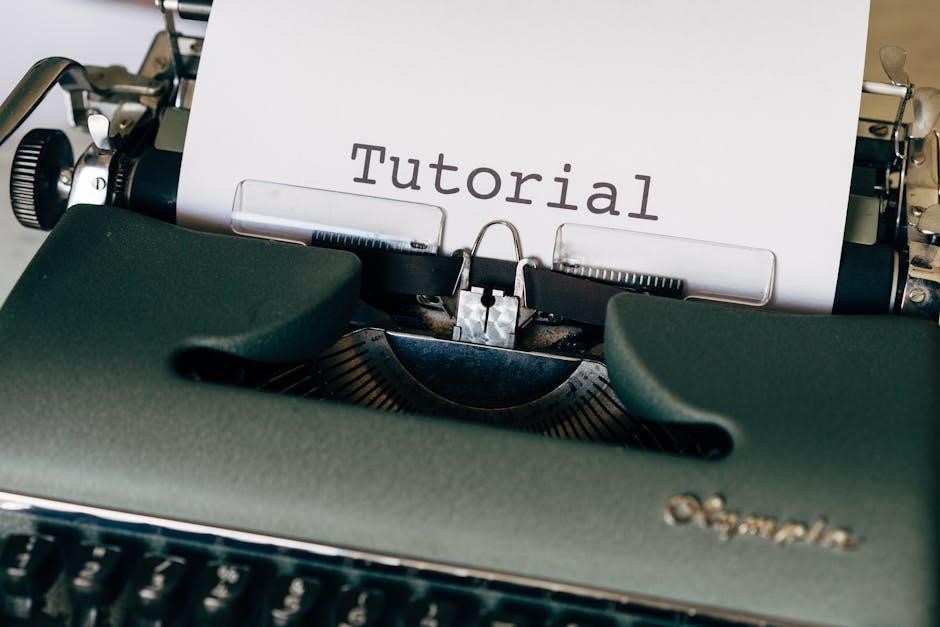Troy-Bilt TB110 Engine Manual PDF: A Comprehensive Guide
The Troy-Bilt TB110 engine manual PDF serves as a vital resource for owners‚ providing essential safety instructions‚ maintenance guidelines‚ and troubleshooting tips. This comprehensive guide ensures proper operation and extends the lifespan of your lawnmower engine.
The Troy-Bilt TB110 is a popular lawnmower designed for residential use‚ known for its reliability and ease of operation. Equipped with a 140cc Briggs & Stratton engine‚ it offers sufficient power for small to medium-sized yards. This push mower provides a convenient solution for maintaining your lawn with efficiency. Understanding its features and proper usage is key to optimal performance and longevity.
Understanding the Importance of the Engine Manual
The engine manual is crucial for safe and effective operation of the Troy-Bilt TB110 lawn mower. It contains essential information regarding safety precautions‚ operating instructions‚ and maintenance schedules. Consulting the manual helps prevent accidents‚ ensures proper usage‚ and extends the lifespan of your equipment. By following the guidelines‚ you can optimize performance and avoid costly repairs‚ maintaining a well-kept lawn.
Locating and Downloading the TB110 Engine Manual PDF
Finding the TB110 engine manual PDF is straightforward. Official websites and online resources offer downloads. Ensure the manual matches your mower’s model number for accurate information and guidance.
Official Troy-Bilt Website
The primary source for the TB110 engine manual PDF is the official Troy-Bilt website. Navigate to the “Support” or “Owners” section and search using your mower’s model number. Downloading directly from Troy-Bilt ensures you receive the most accurate and up-to-date version of the manual. This method also guarantees that the document is free from any potentially harmful modifications or inaccuracies‚ providing peace of mind and reliable guidance for maintaining your equipment.
ManualsLib and Other Online Resources
Besides the official Troy-Bilt website‚ alternative platforms like ManualsLib offer downloadable PDFs of the TB110 engine manual. These sites aggregate user manuals‚ providing a convenient way to access the document if it’s unavailable on the manufacturer’s page. However‚ users should exercise caution when downloading from third-party sources‚ ensuring the manual is authentic and free from malware. Always compare information with official sources whenever possible to confirm accuracy.
Key Sections of the TB110 Engine Manual
The TB110 engine manual is structured into sections covering safety‚ operation‚ maintenance‚ and troubleshooting. These key sections provide users with the knowledge needed to safely operate and maintain their lawnmower effectively.
Safety Precautions and Warnings
This section details crucial safety measures to prevent accidents and injuries while operating the Troy-Bilt TB110. It emphasizes the importance of keeping hands and feet away from moving parts‚ wearing appropriate protective gear‚ and avoiding operation in enclosed spaces due to carbon monoxide risk. Review all warnings‚ especially instructions about rapid retraction of starter cord (kickback) which can pull hand and arm toward engine faster than you can react.
Operating Instructions
This section provides step-by-step guidance on starting‚ stopping‚ and operating the Troy-Bilt TB110 lawnmower safely. It covers pre-start checks‚ proper starting procedures‚ engaging the mower blades‚ and maintaining a consistent mowing speed. It also includes instructions on handling different types of terrain and adjusting the cutting height for optimal performance‚ referencing the importance of following these instructions for safe and effective lawn maintenance.
Maintenance Schedule and Procedures
This part of the manual details the regular maintenance required to keep the TB110 engine running smoothly. It outlines a schedule for tasks like oil changes‚ air filter cleaning‚ and spark plug maintenance. Clear procedures are provided for each task‚ including step-by-step instructions and recommended tools. Adhering to this schedule ensures longevity‚ prevents costly repairs‚ and maintains optimal engine performance throughout the mower’s lifespan;
Troubleshooting Common Issues
This section addresses common problems encountered with the Troy-Bilt TB110 engine‚ providing diagnostic steps and potential solutions. It covers issues such as engine starting difficulties‚ stalling‚ and unusual noises. The manual offers practical advice on identifying the root cause of the problem and suggests troubleshooting steps. By consulting this section‚ users can attempt simple repairs before seeking professional assistance‚ potentially saving time and money.

Engine Specifications and Performance
This section provides detailed engine specifications for the Troy-Bilt TB110‚ including its power output‚ displacement‚ and design. It also covers performance characteristics‚ fuel efficiency‚ and optimal operating conditions for the Briggs & Stratton 140cc engine.
Briggs & Stratton 140cc Engine Details
The Troy-Bilt TB110 lawnmower utilizes a Briggs & Stratton 140cc engine‚ offering reliable power for residential use. This section delves into specific details regarding the engine’s construction‚ including cylinder configuration‚ valve arrangement‚ and cooling system. Understanding these specifics helps owners appreciate the engine’s design and capabilities‚ ensuring proper maintenance and operation for optimal performance and longevity during lawn care activities. Key performance metrics are also covered‚ and this will help you understand what to look for when assessing performance.
Fuel and Oil Requirements
This section outlines the precise fuel and oil specifications necessary for the Troy-Bilt TB110’s Briggs & Stratton engine. Using the correct fuel type and oil viscosity is crucial for optimal engine performance and longevity. Details include recommended octane levels for gasoline and specific oil types based on operating temperatures. Adhering to these requirements prevents engine damage‚ ensures efficient combustion‚ and promotes a cleaner‚ longer-lasting engine. Understanding these specifications is key to a healthy and well-maintained lawnmower.

Maintenance Procedures Explained
This section details essential maintenance tasks for the Troy-Bilt TB110‚ with step-by-step instructions. Proper upkeep ensures optimal performance and prolongs engine life. Regular maintenance prevents costly repairs and keeps your lawnmower running smoothly.
Oil Changes
Performing regular oil changes on your Troy-Bilt TB110 is crucial for maintaining engine health and performance. The engine manual provides detailed instructions on the correct type of oil to use and the recommended intervals for oil changes. Following these guidelines will ensure proper lubrication‚ reduce wear and tear‚ and prevent engine damage; Consult the manual for specific procedures and safety precautions to ensure a successful and safe oil change. This routine maintenance task will contribute significantly to the longevity of your lawnmower’s engine.
Air Filter Cleaning and Replacement
Maintaining a clean air filter is essential for optimal engine performance in your Troy-Bilt TB110. A dirty air filter restricts airflow‚ leading to reduced power and increased fuel consumption. The engine manual outlines the proper procedures for cleaning or replacing the air filter. Regular maintenance‚ as described in the manual‚ ensures the engine receives clean air‚ preventing damage and prolonging its lifespan. Consult the manual for specific cleaning techniques‚ replacement part numbers‚ and recommended intervals to keep your engine running smoothly.
Spark Plug Maintenance
The Troy-Bilt TB110 engine manual provides detailed instructions on spark plug maintenance‚ a critical aspect of ensuring reliable engine starting and efficient operation. Proper spark plug maintenance includes regular inspection‚ cleaning‚ and replacement as needed. The manual specifies the correct spark plug type and gap setting for optimal performance. Following the manual’s guidance on spark plug maintenance helps prevent common issues such as engine misfires‚ rough idling‚ and starting difficulties‚ ultimately extending the life of your TB110 engine. Refer to the manual for step-by-step instructions and safety precautions.
Troubleshooting Common Engine Problems
The TB110 engine manual’s troubleshooting section addresses frequent issues like starting difficulties‚ stalling‚ and unusual noises. It offers diagnostic steps and potential solutions to help users resolve problems efficiently and safely‚ minimizing downtime.
Engine Starting Difficulties
Experiencing trouble starting your Troy-Bilt TB110 engine can be frustrating. The engine manual offers guidance‚ suggesting checks for proper fuel levels‚ spark plug condition‚ and air filter cleanliness. Ensure the choke is correctly positioned and the spark plug wire is securely connected. A faulty spark plug‚ stale fuel‚ or a clogged air filter are common culprits. Consulting the manual provides step-by-step troubleshooting for these issues‚ ensuring a smoother start. Refer to the manual for specific instructions related to your model.
Engine Stalling
If your Troy-Bilt TB110 engine stalls frequently‚ the engine manual provides troubleshooting steps. Common causes include a dirty air filter restricting airflow‚ a clogged fuel line preventing adequate fuel supply‚ or a malfunctioning spark plug causing intermittent ignition. The manual advises inspecting and cleaning or replacing these components as needed. Additionally‚ ensure the fuel cap vent is clear to prevent vacuum lock. Incorrect oil levels or a faulty carburetor can also contribute to stalling issues. Consulting the manual offers detailed solutions for each scenario.
Unusual Noises and Vibrations
Unusual noises and excessive vibrations in your Troy-Bilt TB110 can indicate underlying engine problems. The engine manual helps identify these issues. Potential causes include loose engine components‚ a damaged or unbalanced blade‚ or worn-out bearings. The manual advises checking for loose bolts and tightening them accordingly. Inspect the blade for damage and ensure it is properly balanced. If vibrations persist‚ consult the manual for guidance on inspecting and replacing bearings. Addressing these issues promptly can prevent further damage and ensure safe operation.
Safety Guidelines and Best Practices
Adhering to safety guidelines and best practices is crucial when operating your TB110. The engine manual outlines pre-operation checks‚ safe mowing techniques‚ and proper storage procedures to minimize risks and ensure user safety.
Pre-Operation Safety Checks
Before starting your Troy-Bilt TB110‚ conduct thorough pre-operation safety checks as detailed in the engine manual. Inspect the lawnmower for any loose parts or damage. Check the engine oil and fuel levels to ensure they are adequate. Clear the mowing area of any obstacles‚ such as rocks or debris‚ that could cause injury or damage to the mower. Verify all safety guards and shields are properly in place‚ as indicated within the manual‚ before commencing mowing. Doing so ensures safe and effective operation.
Safe Mowing Practices
Adhere to safe mowing practices outlined in the Troy-Bilt TB110 engine manual PDF to minimize the risk of accidents. Always wear appropriate personal protective equipment‚ including safety glasses and closed-toe shoes‚ as described in the manual. Mow only in daylight or good artificial light. Keep children and pets a safe distance away from the mowing area. Avoid mowing on wet grass‚ which can be slippery. Never operate the mower under the influence of drugs or alcohol.
Post-Operation Storage
Proper post-operation storage is crucial for maintaining your Troy-Bilt TB110 lawnmower. Allow the engine to cool completely before storing it‚ as advised in the manual. Clean the mower deck to remove grass clippings and debris. Store the mower in a dry‚ sheltered area‚ away from direct sunlight and extreme temperatures. Disconnect the spark plug wire to prevent accidental starting. Refer to the manual for specific long-term storage instructions‚ including fuel stabilization.

Where to Find Replacement Parts
Locating the correct replacement parts for your Troy-Bilt TB110 is essential for maintenance. You can find parts online or through local dealers. Use the engine manual to identify the correct part numbers.
Identifying the Correct Part Number
To ensure you order the right components for your Troy-Bilt TB110‚ accurately identifying the correct part number is crucial. Consult your engine manual‚ which includes detailed diagrams and part lists. Verify the model and serial number of your lawnmower. Online parts diagrams and dealer resources can also help you cross-reference numbers. Matching the correct part number guarantees compatibility and proper function‚ avoiding installation issues.
Ordering Parts Online or from Local Dealers
Once you have the correct part number‚ you can conveniently order replacement parts for your Troy-Bilt TB110 engine; Many online retailers specialize in lawnmower parts‚ offering vast inventories. Local Troy-Bilt dealers are another excellent option‚ providing expert advice and genuine parts. Compare prices and shipping costs when buying online. Purchasing from authorized dealers ensures warranty coverage and the quality of the replacement part.
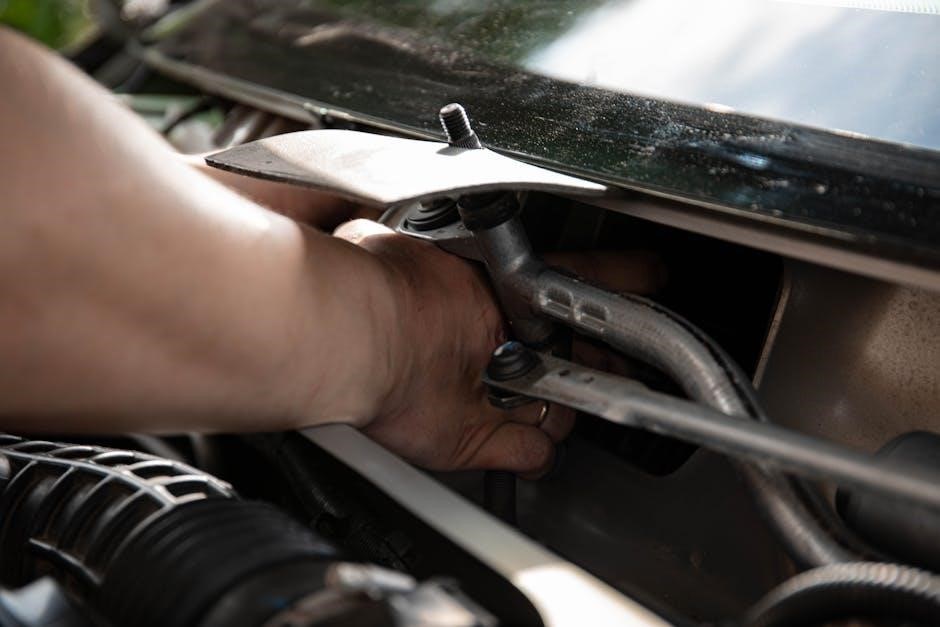
Warranty Information and Support
Understanding the warranty coverage for your TB110 engine is essential. Contact Troy-Bilt customer support for assistance with warranty claims or technical issues. Have your model and serial number ready when contacting support.
Understanding the Warranty Coverage
The Troy-Bilt TB110 lawnmower typically comes with a limited warranty covering defects in materials and workmanship. The duration of the warranty can vary‚ so consult your owner’s manual for specific details. Understanding what is covered (and not covered) is crucial. Common exclusions often include normal wear and tear‚ improper maintenance‚ or damage from misuse. Review the terms carefully to ensure you’re aware of your rights and responsibilities.
Contacting Troy-Bilt Customer Support
If you encounter issues with your Troy-Bilt TB110 lawnmower or need clarification regarding the engine manual‚ reaching out to customer support is recommended. You can typically find contact information on the Troy-Bilt website or in your owner’s manual. Be prepared to provide your model number and serial number when contacting support. Customer service can assist with troubleshooting‚ warranty claims‚ and locating authorized service centers.
By adhering to the guidelines outlined in the Troy-Bilt TB110 engine manual PDF‚ you can significantly extend the life of your lawnmower. Regular maintenance‚ proper operation‚ and prompt attention to any issues will keep your TB110 running smoothly for years to come. Remember to consult the manual for specific instructions and safety precautions to ensure optimal performance.





